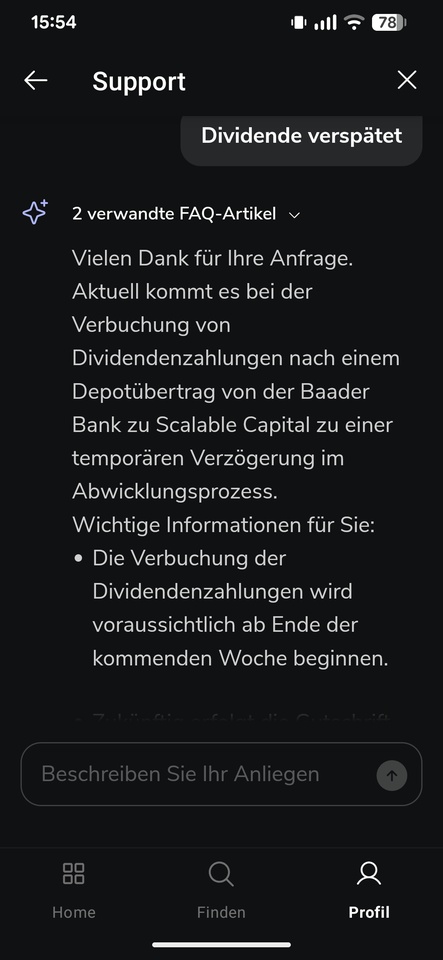Hello everyone,
I would like to get your feedback on my portfolio strategy. Here are the key data:
Age: 20 years old
Investment horizon: Very long (several decades)
Strategy: First investment then invest via savings plan + B&H
1. the planned portfolio
I am planning the following allocation for my portfolio. Important: The 20% in the dividend ETF will only flow until my exemption order has been fully utilized by the distributions. After that, fresh money will only flow into the other two positions.
- 55% Vanguard FTSE All-World (basis) $VWCE (-1,16%)
25% Xtrackers MSCI World Momentum
$XDEM (-2,57%)
20% VanEck Developed Markets Div Lead
$TDIV (-0,33%)
2. current situation
I took advantage of the "dip" in April and am already invested (mix of ETFs and individual stocks). I am currently considering how I should adjust or structure my portfolio, as the individual stocks have performed extremely well:
- Nvidia: +60%
- Alphabet: +90%
- Others: Amazon, Meta, United Health (all up).
My questions for you:
What do you generally think of my ETF selection and weighting (55/25/20)?
Would you swap one of the ETFs for another product?
Is there anything missing in the allocation (would you add another component, e.g. small caps)?
Individual shares: How would you deal with the winners? Realize profits and shift them into the ETFs, or simply let them run as "satellites", as I am still young?
Many thanks for your feedback!






















